SWG Kunstlexikon
JAMES ENSOR
KUNSTWERKE JAMES ENSOR
James Ensor | The Skeleton Painter | Royal Academy of Arts | Paintbrush in hand, the artist stands at his easel. It’s a typical self-portrait, but for one crucial detail – where his head should be, there is instead a grinning skull. Why? Learn more about this intriguing work by the Belgian painter James Ensor in this video with our curator Adrian Locke. Book now to see this painting in „Intrigue: James Ensor by Luc Tuymans.“ | YouTube
James Ensor | A collection of 148 works | LearnFromMasters | Description: „Ensor’s father, James Frederic Ensor, born in Brussels of English parents, was a cultivated man who studied engineering in England and Germany. Ensor’s mother, Maria Catherina Haegheman, was Belgian. Ensor himself lacked interest in academic study and left school at the age of fifteen to begin his artistic training with two local painters. From 1877 to 1880, he attended the Académie Royale des Beaux-Arts in Brussels, where one of his fellow students was Fernand Khnopff. Ensor first exhibited his work in 1881. From 1880 until 1917, he had his studio in the attic of his parents‘ house. His travels were very few: three brief trips to France and two to the Netherlands in the 1880s, and a four-day trip to London in 1892. During the late 19th century much of his work was rejected as scandalous, particularly his painting Christ’s Entry Into Brussels in 1889 (1888–89). The Belgium art critic Octave Maus famously summed up the response from contemporaneous art critics to Ensor’s innovative (and often scathingly political) work: „Ensor is the leader of a clan. Ensor is the limelight. Ensor sums up and concentrates certain principles which are considered to be anarchistic. In short, Ensor is a dangerous person who has great changes. . . . He is consequently marked for blows. It is at him that all the harquebuses are aimed. It is on his head that are dumped the most aromatic containers of the so-called serious critics.“ Some of Ensor’s contemporaneous work reveals his precocious response to this criticism. For example, the 1887 etching „Le Pisseur“ depicts the artist urinating on a grafitied wall declaring (in the voice of an art critic) „Ensor set un fou“ or „Ensor is a Madman.“ But his paintings continued to be exhibited, and he gradually won acceptance and acclaim. In 1895 his painting The Lamp Boy (1880) was acquired by the Royal Museums of Fine Arts of Belgium in Brussels, and he had his first solo exhibition in Brussels.[5] By 1920 he was the subject of major exhibitions; in 1929 he was named a Baron by King Albert, and was the subject of the Belgian composer Flor Alpaerts’s James Ensor Suite; and in 1933 he was awarded the band of the Légion d’honneur. Even in the first decade of the 20th century, however, his production of new works was diminishing, and he increasingly concentrated on music—although he had no musical training, he was a gifted improviser on the harmonium, and spent much time performing for visitors.[6] Against the advice of friends, he remained in Ostend during World War II despite the risk of bombardment. In his old age he was an honored figure among Belgians, and his daily walk made him a familiar sight in Ostend. He died there after a short illness, on 19 November 1949.“ | MUSIC: Kevin MacLeod – Earth Prelude Earth Prelude by Kevin MacLeod is licensed under a Creative Commons Attribution license | YouTube
JAMES ENSOR
KUNSTWERKE JAMES ENSOR
James Ensor | The Skeleton Painter | Royal Academy of Arts | Paintbrush in hand, the artist stands at his easel. It’s a typical self-portrait, but for one crucial detail – where his head should be, there is instead a grinning skull. Why? Learn more about this intriguing work by the Belgian painter James Ensor in this video with our curator Adrian Locke. Book now to see this painting in „Intrigue: James Ensor by Luc Tuymans.“ | YouTube
James Ensor | A collection of 148 works | LearnFromMasters | Description: „Ensor’s father, James Frederic Ensor, born in Brussels of English parents, was a cultivated man who studied engineering in England and Germany. Ensor’s mother, Maria Catherina Haegheman, was Belgian. Ensor himself lacked interest in academic study and left school at the age of fifteen to begin his artistic training with two local painters. From 1877 to 1880, he attended the Académie Royale des Beaux-Arts in Brussels, where one of his fellow students was Fernand Khnopff. Ensor first exhibited his work in 1881. From 1880 until 1917, he had his studio in the attic of his parents‘ house. His travels were very few: three brief trips to France and two to the Netherlands in the 1880s, and a four-day trip to London in 1892. During the late 19th century much of his work was rejected as scandalous, particularly his painting Christ’s Entry Into Brussels in 1889 (1888–89). The Belgium art critic Octave Maus famously summed up the response from contemporaneous art critics to Ensor’s innovative (and often scathingly political) work: „Ensor is the leader of a clan. Ensor is the limelight. Ensor sums up and concentrates certain principles which are considered to be anarchistic. In short, Ensor is a dangerous person who has great changes. . . . He is consequently marked for blows. It is at him that all the harquebuses are aimed. It is on his head that are dumped the most aromatic containers of the so-called serious critics.“ Some of Ensor’s contemporaneous work reveals his precocious response to this criticism. For example, the 1887 etching „Le Pisseur“ depicts the artist urinating on a grafitied wall declaring (in the voice of an art critic) „Ensor set un fou“ or „Ensor is a Madman.“ But his paintings continued to be exhibited, and he gradually won acceptance and acclaim. In 1895 his painting The Lamp Boy (1880) was acquired by the Royal Museums of Fine Arts of Belgium in Brussels, and he had his first solo exhibition in Brussels.[5] By 1920 he was the subject of major exhibitions; in 1929 he was named a Baron by King Albert, and was the subject of the Belgian composer Flor Alpaerts’s James Ensor Suite; and in 1933 he was awarded the band of the Légion d’honneur. Even in the first decade of the 20th century, however, his production of new works was diminishing, and he increasingly concentrated on music—although he had no musical training, he was a gifted improviser on the harmonium, and spent much time performing for visitors.[6] Against the advice of friends, he remained in Ostend during World War II despite the risk of bombardment. In his old age he was an honored figure among Belgians, and his daily walk made him a familiar sight in Ostend. He died there after a short illness, on 19 November 1949.“ | MUSIC: Kevin MacLeod – Earth Prelude Earth Prelude by Kevin MacLeod is licensed under a Creative Commons Attribution license | YouTube
JAMES ENSOR
KUNSTWERKE JAMES ENSOR
James Ensor | The Skeleton Painter | Royal Academy of Arts | Paintbrush in hand, the artist stands at his easel. It’s a typical self-portrait, but for one crucial detail – where his head should be, there is instead a grinning skull. Why? Learn more about this intriguing work by the Belgian painter James Ensor in this video with our curator Adrian Locke. Book now to see this painting in „Intrigue: James Ensor by Luc Tuymans.“ | YouTube
James Ensor | A collection of 148 works | LearnFromMasters | Description: „Ensor’s father, James Frederic Ensor, born in Brussels of English parents, was a cultivated man who studied engineering in England and Germany. Ensor’s mother, Maria Catherina Haegheman, was Belgian. Ensor himself lacked interest in academic study and left school at the age of fifteen to begin his artistic training with two local painters. From 1877 to 1880, he attended the Académie Royale des Beaux-Arts in Brussels, where one of his fellow students was Fernand Khnopff. Ensor first exhibited his work in 1881. From 1880 until 1917, he had his studio in the attic of his parents‘ house. His travels were very few: three brief trips to France and two to the Netherlands in the 1880s, and a four-day trip to London in 1892. During the late 19th century much of his work was rejected as scandalous, particularly his painting Christ’s Entry Into Brussels in 1889 (1888–89). The Belgium art critic Octave Maus famously summed up the response from contemporaneous art critics to Ensor’s innovative (and often scathingly political) work: „Ensor is the leader of a clan. Ensor is the limelight. Ensor sums up and concentrates certain principles which are considered to be anarchistic. In short, Ensor is a dangerous person who has great changes. . . . He is consequently marked for blows. It is at him that all the harquebuses are aimed. It is on his head that are dumped the most aromatic containers of the so-called serious critics.“ Some of Ensor’s contemporaneous work reveals his precocious response to this criticism. For example, the 1887 etching „Le Pisseur“ depicts the artist urinating on a grafitied wall declaring (in the voice of an art critic) „Ensor set un fou“ or „Ensor is a Madman.“ But his paintings continued to be exhibited, and he gradually won acceptance and acclaim. In 1895 his painting The Lamp Boy (1880) was acquired by the Royal Museums of Fine Arts of Belgium in Brussels, and he had his first solo exhibition in Brussels.[5] By 1920 he was the subject of major exhibitions; in 1929 he was named a Baron by King Albert, and was the subject of the Belgian composer Flor Alpaerts’s James Ensor Suite; and in 1933 he was awarded the band of the Légion d’honneur. Even in the first decade of the 20th century, however, his production of new works was diminishing, and he increasingly concentrated on music—although he had no musical training, he was a gifted improviser on the harmonium, and spent much time performing for visitors.[6] Against the advice of friends, he remained in Ostend during World War II despite the risk of bombardment. In his old age he was an honored figure among Belgians, and his daily walk made him a familiar sight in Ostend. He died there after a short illness, on 19 November 1949.“ | MUSIC: Kevin MacLeod – Earth Prelude Earth Prelude by Kevin MacLeod is licensed under a Creative Commons Attribution license | YouTube



